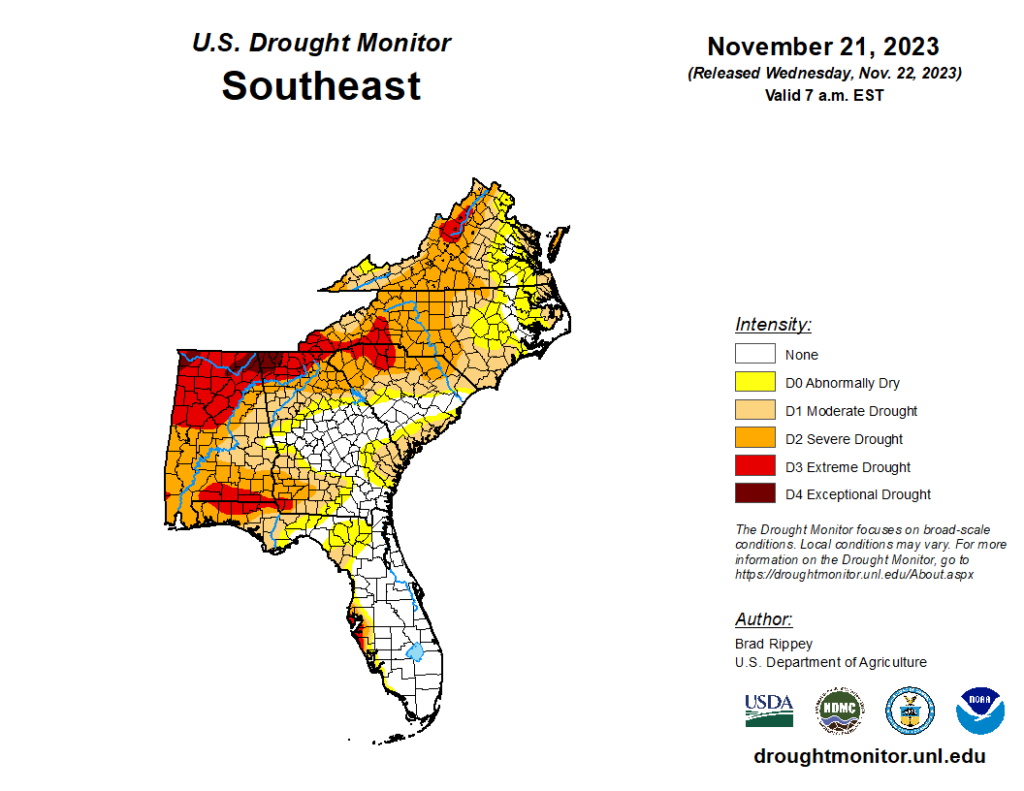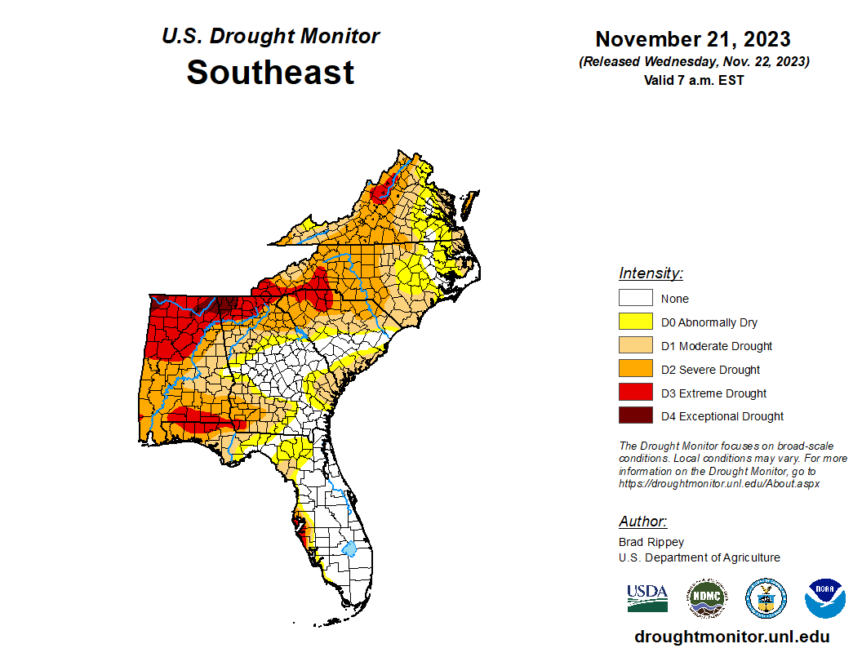
By Clint Thompson
Recent rain events have alleviated some of the dry conditions being observed across the Southeast. All signs point to increased rainfall this winter, due to an El Niño weather pattern, believes Pam Knox, University of Georgia Extension agricultural climatologist.
“We’ve been stuck in this pattern of high pressure over us, and it’s just kept all of the rain systems away. Fortunately, that’s finally changed,” Knox said. “Now we’re back into a pattern where we can expect to see more frequent rains. I think it’s going to look a lot more like an El Niño winter going forward from here on.”
Rain Totals
According to the UGA Automated Weather Network, Tifton, Georgia, received 0.37 inches of rain on Sunday, Nov. 26. It received only 0.72 from Nov. 1 to Nov. 26. That total increases to just 2.01 since Oct. 1. Northwest Georgia is in the worst shape. From Sept. 1 to Nov. 26, Ellijay, Georgia, received 3.03 inches, compared to 5.56 in 2022 and 8.91 in 2020.
Extreme and exceptional drought still cover North Georgia and most of central to northern Alabama, according to the U.S. Drought Monitor. Almost all of Alabama is experiencing at least a severe drought, while Georgia’s driest conditions are in the north and southwest parts of the state. Hopefully, increased rainfall is on the horizon.
“We had droughts in the fall in 2016 and in 2019. It really hasn’t been all that long. There’s definitely been some places in the northwest part of the state that I think were drier this time than in either of those two droughts. Fall is typically a pretty dry time of year. We do expect things to be fairly dry, just not this dry,” Knox said. “The drought has been pretty widespread. It’s been pretty bad here, but some other places to our west it’s been even worse.”










